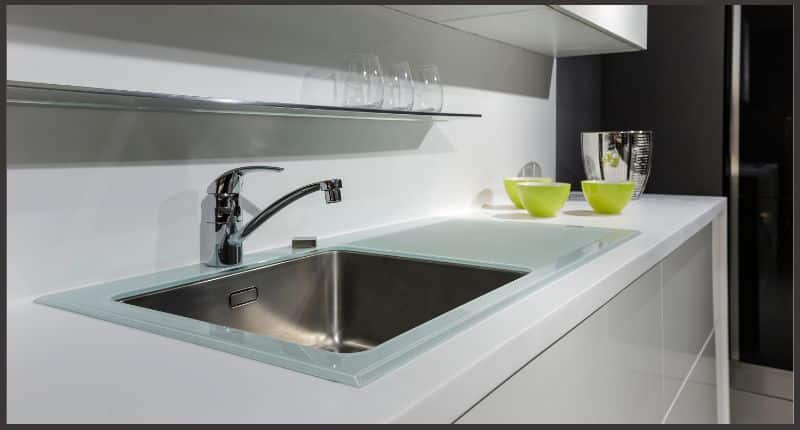Introduction:
The kitchen knife is an essential tool for every serious cook and culinary enthusiast. With a vast range of options available, each designed for specific purposes, it’s crucial to understand the different types of kitchen knives and their functionalities. From versatile chef’s knives that can handle various tasks to specialized blades like the Santoku knife, bread knife, paring knife, and more, each one has its unique features and benefits. Exploring the world of kitchen knives allows us to unlock a whole new level of culinary precision, efficiency, and creativity. In this article, we will delve into the various types of kitchen knives, helping you choose the perfect tools for your culinary adventures.
Table of Contents
Different Types of Kitchen Knives: A Complete Guide to the Essential Tools for Your Kitchen
When it comes to cooking, having the right tools in your kitchen can make all the difference. And one of the most crucial tools every home cook needs is a set of high-quality kitchen knives. However, with so many different types of kitchen knives available, it can be overwhelming to choose the right ones for your needs.
Why Kitchen Knives Matter
Before we dive into the different types of kitchen knives, let’s take a moment to understand why having the right knives is so important. A good knife is not just a tool; it’s an extension of the cook’s hand. It allows for precision and control, making tasks like chopping, dicing, and slicing easier and more efficient.
Investing in a set of high-quality kitchen knives is essential if you want to elevate your cooking skills. Not only will they make your tasks more effortless, but they will also last longer with proper care and maintenance.
The Chef’s Knife: The All-Purpose Workhorse
When it comes to kitchen knives, the chef’s knife is the undisputed star of the show. Also known as a cook’s knife, this versatile tool is a must-have for any serious home cook or professional chef.
The chef’s knife typically has a broad, sturdy blade that tapers to a sharp point. With a length ranging from 6 to 12 inches, it can handle a wide variety of tasks, such as slicing, dicing, and mincing. Its curved blade allows for a rocking motion, making it ideal for chopping herbs and veggies.
Whether you’re a novice or an experienced cook, a good quality chef’s knife should be the foundation of your kitchen knife collection. Look for one made from high-carbon stainless steel, as it provides the perfect balance of durability and sharpness.
The Versatile Paring Knife
In addition to a chef’s knife, a paring knife is another essential tool that every kitchen should have. This small knife with a plain edge blade is ideal for delicate tasks that require precision, such as peeling and trimming fruits and vegetables.
The paring knife typically has a blade length of around 3 to 4 inches, making it the perfect size for intricate tasks. Its compact size and maneuverability allow you to peel an apple or remove the seeds from a chili pepper with ease.
When selecting a paring knife, look for one with a comfortable handle that provides a secure grip. Also, consider the blade material to ensure it retains its sharpness even after multiple uses.
The Mighty Santoku Knife
Originating from Japan, the Santoku knife has gained popularity worldwide for its versatility and efficiency. With its wider blade and shorter length compared to a traditional chef’s knife, the Santoku knife excels at slicing, dicing, and chopping.
One unique feature of the Santoku knife is the Granton edge, also known as the hollow edge or scalloped edge. These small indentations along the blade help reduce friction and prevent food from sticking, making it ideal for slicing thin cuts of meat and fish.
If you’re a fan of Asian cuisine or enjoy the precision of a Santoku knife, adding one to your kitchen arsenal is highly recommended.
The Essential Bread Knife
No kitchen knife collection is complete without a reliable bread knife. With its serrated edge, the bread knife is designed to effortlessly cut through crusty bread and delicate pastries without squishing or tearing them.
The long, narrow blade of a bread knife typically ranges from 8 to 10 inches. The edge features deep, sharp teeth that grip the bread’s surface, providing a clean, precise cut.
Not only is a bread knife essential for slicing bread, but it’s also useful for cutting through cakes, tomatoes, and other soft foods with a tough exterior.
The Mighty Cleaver
If you’re looking to tackle tougher tasks like splitting bones or chopping through thick cuts of meat, a cleaver is the way to go. The cleaver’s heavyweight and large, rectangular blade make it the perfect tool for these heavy-duty tasks.
Traditionally associated with Chinese cuisine, cleavers are also useful for crushing garlic cloves, tenderizing meat, and even dice vegetables with precision.
When choosing a cleaver, look for one with a solid and comfortable handle that can withstand heavy use. The blade should be made from high-quality stainless steel to ensure longevity and sharpness.
The Trusty Utility Knife
Sitting between a paring knife and a chef’s knife in terms of size, the utility knife is a versatile and handy tool in the kitchen. With a blade length ranging from 4 to 7 inches, it’s perfect for tasks that require more precision than a chef’s knife but more power than a paring knife.
A utility knife is ideal for slicing small fruits, trimming fat from meat, or even tackling larger vegetables. Its compact size makes it easy to maneuver, while the sharp blade allows for precise cuts.
The Honorable Mention: The Fillet Knife
While not as essential as the other knives on this list, a fillet knife is a valuable tool for anyone who enjoys cooking fish. This flexible and thin-bladed knife is ideal for delicate tasks like deboning and filleting fish, as well as removing the skin.
If you’re an avid angler or simply someone who loves seafood, investing in a fillet knife will make your fish preparation a breeze.
Conclusion
From the all-purpose chef’s knife to the precision-focused paring knife, each type of kitchen knife serves a specific purpose in the culinary world. By understanding the different types and their uses, you can build a collection of kitchen knives that will become your trusted companions in the kitchen.
Remember, a good knife is an investment, and with proper care and maintenance, it can last a lifetime. So, choose wisely, keep them sharp, and enjoy the delightful experience of cooking with the right tools at your side.
Now that you’re equipped with the knowledge of different types of kitchen knives, it’s time to elevate your culinary skills and embark on new gastronomic adventures!

Photo by Naomi Hébert on Unsplash
Additional Guide
Here are three related articles that provide more information on kitchen knives:
1. Kitchen Tips for the Home: Maximize Efficiency and Master Culinary Delights – Link
2. Use Test Data: Enhance Your Knowledge on Kitchen Knives – Link
3. Best Instant Espresso: Top 10 Picks for Coffee Lovers – Link
FAQs: Different Types of Kitchen Knives
Q: What are the different types of kitchen knives that are commonly used?
A: There are several types of kitchen knives that serve different purposes. Common ones include chef’s knife, paring knife, bread knife, utility knife, and serrated knife.
Q: What is a chef’s knife and what is it used for?
A: A chef’s knife, also known as a cook’s knife, is a versatile knife with a broad and curved blade. It is commonly used for chopping, slicing, dicing, and mincing a variety of ingredients like vegetables, fruits, and meats.
Q: What is the purpose of a paring knife?
A: A paring knife is a small, narrow, and pointed knife with a plain edge. It is primarily used for intricate tasks such as peeling, trimming, and shaping fruits and vegetables, as well as deveining shrimps.
Q: What is a bread knife used for?
A: A bread knife has a long serrated blade that is perfect for slicing bread without crushing it. Its serrated edge allows for easy cutting through crusts, making it ideal for slicing bread, bagels, and cakes.
Q: What is the difference between a serrated knife and a utility knife?
A: A serrated knife has a blade that features small, pointed teeth or serrations, which make it excellent for cutting through soft-skinned foods, such as tomatoes or bread, while maintaining the integrity of the interior. On the other hand, a utility knife is a versatile knife with a medium-sized blade that is commonly used for general-purpose slicing, trimming, and precision tasks. It has a plain edge, unlike a serrated knife.


